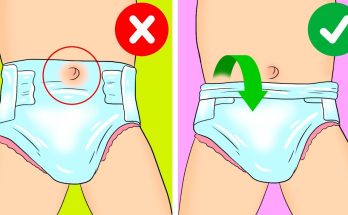Getting a baby to sleep peacefully without tears is a common goal for many parents. While it’s completely normal for babies to cry when they’re tired or overstimulated, there are gentle strategies you can use to help your baby fall asleep calmly and comfortably. With patience, consistency, and a nurturing approach, you can build a sleep routine that minimizes crying and promotes restful sleep for your little one.
Understand Your Baby’s Sleep Needs
The first step to avoiding sleep-related crying is understanding your baby’s natural sleep patterns. Newborns sleep between 14 to 17 hours a day, but their sleep is divided into shorter periods. As they grow, they begin to sleep longer at night and take fewer naps during the day. Watch for signs of sleep readiness—like yawning, rubbing eyes, or fussiness—so you can begin the bedtime routine before your baby becomes overtired, which often leads to more crying.
Create a Calm and Consistent Bedtime Routine
Babies thrive on routine. A consistent bedtime ritual helps signal that sleep is coming, making it easier for your baby to settle down without protest. A gentle routine might include:
-
A warm bath
-
A soothing baby massage
-
Quiet cuddling or rocking
-
Soft lullabies or calming music
-
Dim lighting
-
A final feeding
This relaxing sequence helps your baby transition from being alert to feeling sleepy in a calm and reassuring way.
Encourage Day-Night Awareness
To help your baby sleep better at night, it’s important to teach the difference between day and night. During the day, keep the house bright, interact and play with your baby, and keep noise levels normal. At night, keep lights dim, avoid stimulation, and speak in soft tones. Over time, this helps train your baby’s internal clock to sleep more at night and be alert during the day.
Use Gentle Sleep Techniques
There are many gentle sleep training methods that don’t involve letting your baby cry it out. A few include:
-
Pick-Up-Put-Down Method: If your baby fusses after being put in the crib, pick them up to soothe them, then put them down again when calm. Repeat until they settle.
-
Shush-Pat Technique: While your baby lies in the crib, gently pat their back or chest while making a soft “shhh” sound to provide comfort.
-
Gradual Withdrawal: If your baby is used to being rocked or fed to sleep, slowly reduce your involvement over time. Sit next to the crib until they fall asleep, then move further away each night.
Create a Safe and Comfortable Sleep Environment
Make sure your baby’s sleep space is safe and cozy. The room should be dark, quiet, and a comfortable temperature. Use a white noise machine if needed to block out distracting sounds. Always place your baby on their back to sleep on a firm mattress with no loose bedding, pillows, or stuffed animals.
Be Patient and Flexible
Every baby is different, and what works for one might not work for another. Some babies need more hands-on soothing, while others settle more easily on their own. Be patient, stay consistent with your routine, and remember that crying is often a form of communication—not distress.
By using gentle, nurturing strategies and responding to your baby’s cues, you can help your baby fall asleep peacefully, without unnecessary tears



